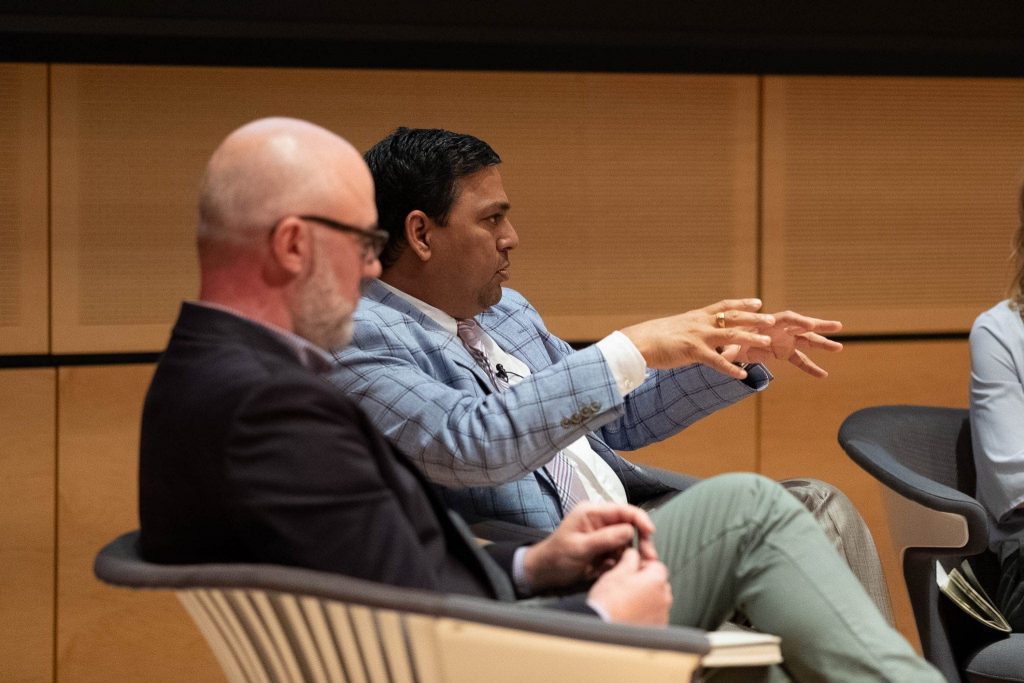Communications experts discuss social media’s role in midterm elections
Communications experts discuss social media's role in midterm elections

With last week’s midterm elections still very much at the front of Americans’ minds — and with results for some states still unconfirmed — some are saying this is the most important midterm election in our lifetime.
“We’ve seen a reckoning since the 2016 election,” said SU Professor Jennifer Grygiel, referring to the impact of social media on politics.
Joining Grygiel in the discussion “How Social Media Impacted the 2018 Midterm Elections” were panelists Jessica Baldwin-Philippi, an assistant professor of communication and media studies at Fordham University; Arvind Diddi, professor of communication studies at SUNY Oswego; and Jon Keegan, a visual journalist and former designer at The Wall Street Journal.
“Midterm elections are notoriously low tech,” said Baldwin-Philippi. “They lag way behind presidential year elections and they don’t have staff creating platform-specific content.”
Even though Baldwin-Philippi said the social platforms themselves did little, a lot happened in what she described as a “platform-adjacent way,” like Americans receiving text messages to go out and vote. She said even though the text messages may seem like spam, they’re actually being sent by real people using a contact information from a database. Much like phone banks or door-to-door canvassing, the idea of the text message is to engage with people and get them thinking about voting.
In his 18 years living in the United States, Diddi said this was the first time he’s seen midterm elections become prominent on social media, with banners appearing on Facebook encouraging people to vote or people posting that they voted. Some corporations even sponsored messages urging people to vote without saying who to vote for.
The one platform everyone was watching this midterm election was Facebook, Keegan said. Facebook has been working to be more transparent to help users better understand where news on their timeline comes from.
Keegan spoke of The Trust Project, which works with major platforms like Google, Bing and Facebook to incorporate standardized guidelines and indicate to users that this information comes from a trustworthy site. For example, he said users might see a little icon accompanying an article on Facebook. Clicking on the icon will give users information about where that article comes from.
Keegan said Facebook has made other efforts to teach users how to spot potentially fake news, but it can be hard for those unfamiliar with code.
News organizations need to do a better job of explaining how they go about their work and the standards and ethics they use in their newsrooms,” Keegan said.
After experimenting with different kinds of media dictated by platforms, like Facebook for example promoting video, Keegan said news organizations are getting “back to basics” in terms of reporting and ethics.
I think the shine is off some of the magic that all the platforms were telling the newsrooms,” Keegan said. “[The newsrooms said] we don’t need to do Facebook instant articles or videos. Let’s just do our journalism.”





